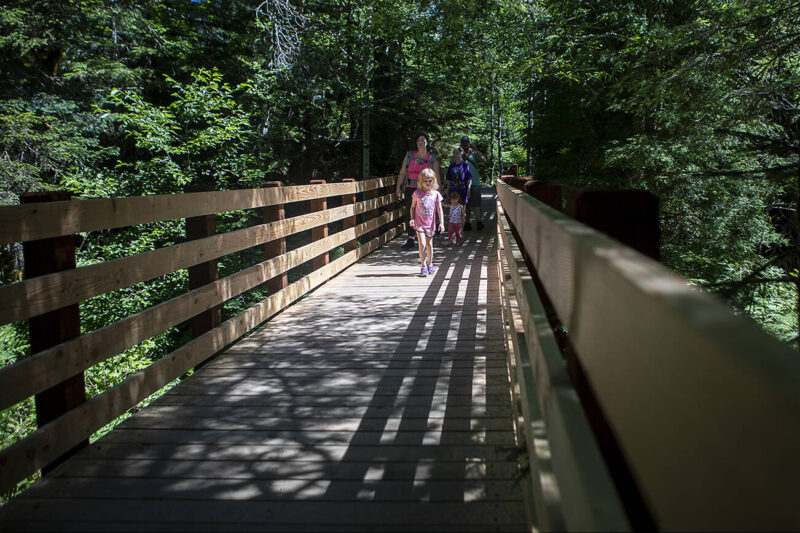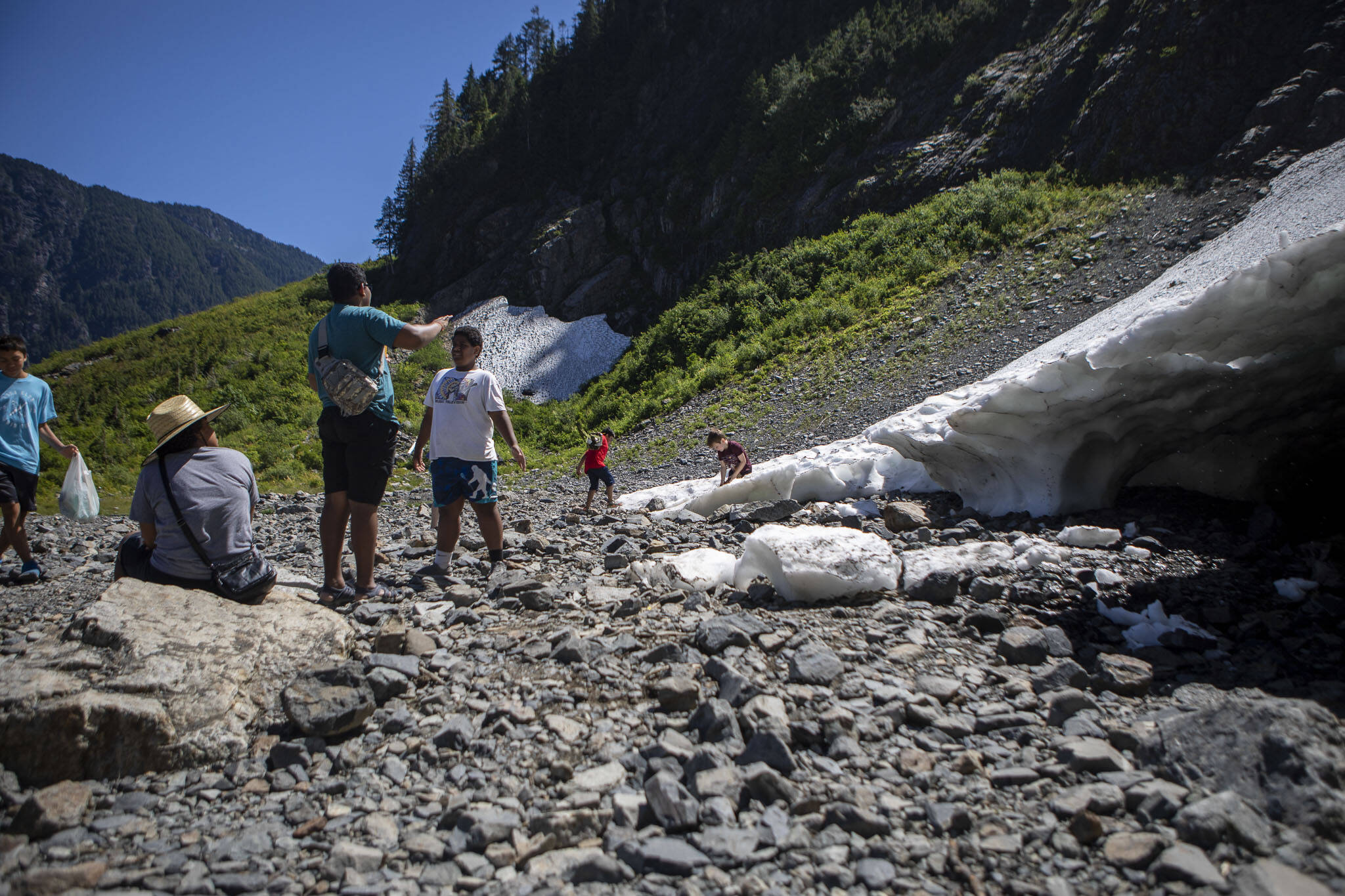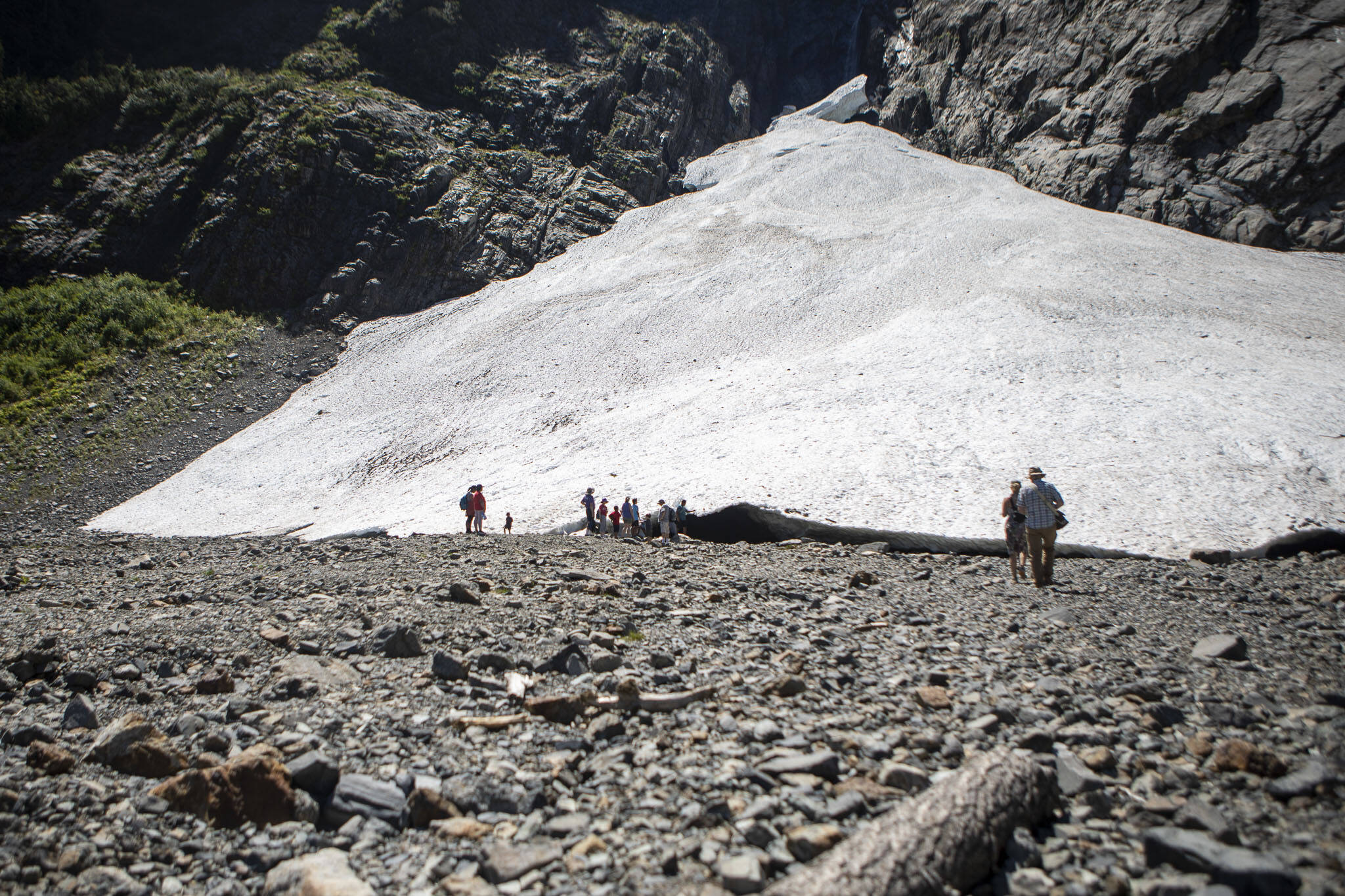On a warm July day, cold wind rushed down the face of Big Four Mountain and over the picturesque ice caves that give the trail its name.
It’s common for hundreds of people to trek the 1.1-mile to the caves, where pockets of air melt out in the summer beneath the ice — the lowest-elevation glacier in the United States outside of Alaska.
Going inside is strictly forbidden.
A memorial sits at the terminus, a reminder that falling ice or rocks can kill.
The caves can be safely enjoyed from a distance.
This year, visitors will find a little easier path to the iconic site in the Mt. Baker-Snoqualmie National Forest. A new boardwalk and bridge crossing the South Fork Stillaguamish River, about 25 miles east of Granite Falls, is the latest project completed in the forest.
More than 60,000 people a year cross the bridge, the U.S. Forest Service said. With closures at other popular sites in the forest, including Mt. Pilchuck Road, the trails that remain open will likely see more foot traffic.
Mountain Loop Highway opened July 15, a sign that hiking season is in full swing in Snohomish County.
On the Big Four trail, past bridges and boardwalks have been in a long, slow war with nature: erosion, swollen streams and snow have taken a toll. One Forest Service bridge across the south fork of the Stilly was built in 1996, removed in 2006 due to ground erosion and then reinstalled in 2009. A decade later, in 2019, part of the footbridge was removed again.
In the meantime, anyone trying to hike to the caves needed to ford the river.
“Accessibility is the key to getting more people out,” said Jeff Clark, a spokesperson with Mt. Baker-Snoqualmie National Forest. This allows not just more people, but even people that maybe aren’t as mobile, that they still have the ability to enjoy these spaces.”
The parking lot sits across from a stone fireplace, the only reminder of a historic inn built in 1921. It burned to the ground in 1949 and was not rebuilt.
Wooden boardwalks, flat trails and the bridge lead to the caves. The project extended the bridge to a total length of 261 feet. The boardwalk still has that fresh lumber smell.
“The bridge has been extended to reduce future risk of erosion,” Lucas Silvis, a civil engineer with the Forest Service, said in a press release. “The longer bridge pushes back an additional 40 feet from the riverbank set in a more stable location.”
The ice caves are formed as avalanches scour down a chute along the mountain. The boulder field approaching the cave is always dangerous, as rocks can roll down the mountain at any time — in 2010, a girl died 20 feet from the caves.
In 2015, the area was closed when two people died and several others were injured in a cave collapse. It later reopened with improved signage. Emergency personnel train for mass-casualty events at the caves.
On its Big Four website, the Forest Service advises hikers to stay on the marked trail, though well-worn paths to the caves dot the approach to the boulder field. At the end of the trail, snow and ice fan out from a rocky outcrop, and the walls drip incessantly in the heat.
No trees stand in the clearing, just small scattered shrubs, a reminder of just how weighty the snow and ice become when winter approaches.
Money for the bridge came from the federal Great American Outdoors Act, which brought new funding to both the U.S. National Parks Service and Forest Service. The Big Four bridge cost US$241,000 and was contracted to One Corner Construction, an Idaho-based company.
The bridge project was folded into a larger undertaking — the Mountain Loop Highway Corridor Enhancement — which funded nearly $1 million in Forest Service projects along the route.
National Parks gobbled up 70 per cent of the Great American Outdoors Act, but national forests across the country received 15 per cent of the money. Much of that is going to overdue projects, or what is referred to as “deferred maintenance.”
Mt. Baker-Snoqualmie has been approved for $7 million in money from the legislation to complete projects such as Big Four. Five local projects are funded through the legislation, while $6 million of that is earmarked for maintenance on 38 roads, 16 trails and six developed recreational sites.
“We’ve had tons of deferred maintenance projects, all land managers do, and to get these done is huge,” Clark said.
Roads got 63 per cent of the new funding stream for Mt. Baker-Snoqualmie. Trails got 27 per cent and recreational sites received the remaining 10 per cent.
Nationally, US$767.8 million has been OK’ed for Great American Outdoors Act projects. The total number of projects is nearly 1,000. According to the Forest Service, all of the Mt. Baker-Snoqualmie projects are currently in progress.
The latest updates at Big Four were proposed in 2017, Forest Service documents show.
A new bridge replacement project was approved in 2019, but had to wait until funding became available.
“The forest service, (the Bureau of Land Management), national parks, if you visit any of those you know that they have a lot of maintenance,” Clark said. “And not a lot of funding goes towards them.”
Plan your adventures throughout the West Coast at westcoasttraveller.com and follow us on Facebook and Instagram @thewestcoasttraveller. And for the top West Coast Travel stories of the week delivered right to your inbox, sign up for our weekly Armchair Traveller newsletter!















 Salmon Arm to shine with August’s star-studded ROOTSandBLUES roster
Salmon Arm to shine with August’s star-studded ROOTSandBLUES roster